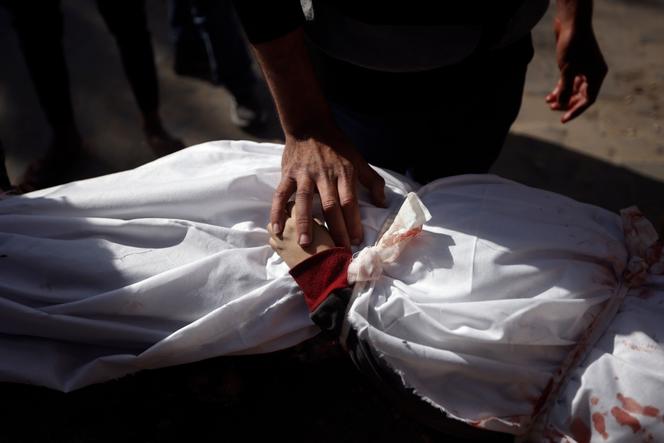


In mid-January, on his return from a five-week visit to Gaza, Sean Casey, emergency medical team coordinator for the World Health Organization (WHO), vented his outrage at seeing patients in the north of the enclave "waiting to die in a hospital with no fuel, electricity or water." Following a three-day visit to the Palestinian enclave, which has been shelled by the Israeli army since the Hamas attack on Israel on October 7, UNICEF Deputy Director General Ted Chaiban denounced on January 18 the "staggering decline in conditions for the children of Gaza," calling for an end to their "massacre."
The testimonies of these UN envoys reflect anything but an alleviation of the suffering of Gaza's civilians, the main objective of Resolution 2720, adopted a month ago, on December 22, by the UN Security Council. The text called on all parties involved in the conflict to facilitate the entry of humanitarian aid into the Palestinian territory. "We're in a state of stagnation, which, in a context like this, is tantamount to taking a step backward," said a UN source.
Among the few signs of change on the ground was a "minor increase" in the number of aid trucks authorized by Israel to enter the enclave, according to Martin Griffiths, head of the United Nations Office for the Coordination of Humanitarian Affairs (OCHA). It is insufficient to meet the needs.
"The aid that comes in is a drop in the ocean. Given the influx of patients into hospitals, it cannot break the vicious circle: surgeries carried out without anesthetics, shortages of medicines for chronic illnesses, etc.," said Tommaso Della Longa, spokesperson for the International Federation of Red Cross and Red Crescent Societies (IFRC). The IFRC provides logistical support to the Egyptian Red Crescent (tasked by Cairo with coordinating international aid to Gaza via Egypt) and its Palestinian counterpart (which runs ambulance and medical services in the enclave).
As for the rest, nothing has changed. While the resolution calls for "safe and unhindered" delivery of aid, as well as "protection of humanitarian personnel and (...) their freedom of movement," access to northern Gaza, the area most in need today, is "repeatedly denied by the Israeli authorities," according to OCHA spokesperson Jens Laerke.
"For the whole territory, the difficulties have remained the same since the beginning: getting aid in, then distributing it," explained Della Longa. "To do this, you need a minimum level of security, which doesn't exist in Gaza, either for the inhabitants or for the aid workers," because of the bombing. "Every time the ambulance drivers go out, they risk their lives. Four members of the Palestinian Red Crescent and two patients were killed when their ambulance was hit by a strike" on January 10, he said. As of January 17, the UN had only been able to bring four armored vehicles into Gaza to secure its teams. Recurrent communication blackouts also complicate coordination on the ground.
You have 50% of this article left to read. The rest is for subscribers only.
